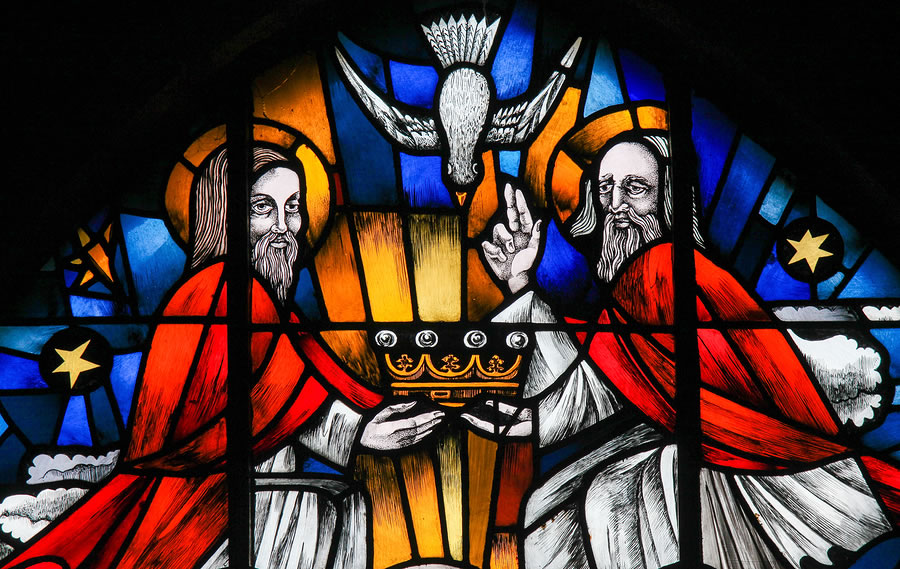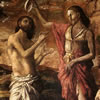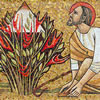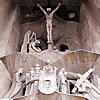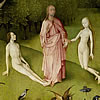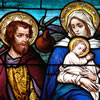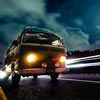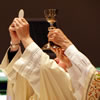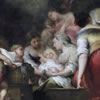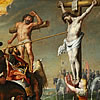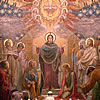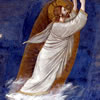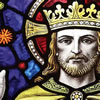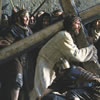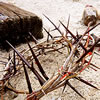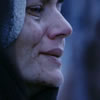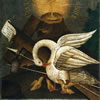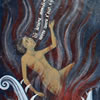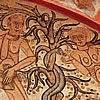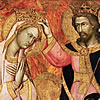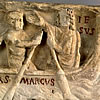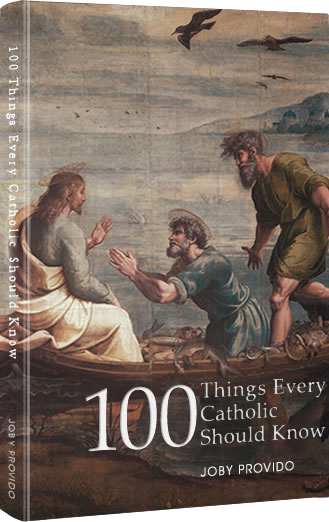The Mystery of the Blessed Trinity
The Judeo-Christian belief is that there is only one God. Since God is the only one who is existence itself, then all other beings owe their existence to him. That would make him the God, for how can a being be god if they were created by someone else. Therefore, when God told Moses he is existence itself, (“I Am who Am",) he was claiming to be the one and only God.
Thus, in the Nicene Creed, we say, “I believe in one God…” This is central to our theology whose roots come from the Jewish Shema prayer found in Scripture: “Hear, O Israel, the Lord our God, the Lord is one.”[1] It is echoed many times in other Bible verses, even in the New Testament.[2]
Judaism and Islam are also monotheistic religions – that means they also believe there is only one God. However, what sets Christians apart is that we believe there are three Persons in one God, which we call The Blessed Trinity.
When Christ commanded his disciples to, “Go, therefore, and make disciples of all nations, baptizing them in the name of the Father, and of the Son, and of the Holy Spirit…”[3] we understand this to mean that the Father, the Son, and the Holy Spirit have only one name — not three — thus indicating their unity.
A person is an identity. It is an answer to “who?” When we want to know the identity of someone, we ask, “who are you?” A person, therefore, identifies someone.[4]
A nature, on the other hand, answers, “what?” When we want to know what something is, we ask, “what is it?” A nature, therefore, describes what a thing is.[5]
In the Blessed Trinity, there are three distinct individuals – The Father, The Son, and The Holy Spirit. They are three separate identities; however, they share one single divine nature.
The Father has a divine nature, the Son has a divine nature, and the Holy Spirit has a divine nature. But, the Father does not just possess a nature like the Son and the Holy Spirit, the Son does not just possess a nature like the Father and the Holy Spirit, and the Holy Spirit does not just possess a nature like the Father and the Son. Instead, they each of them possess the exact same single divine nature.
In the Blessed Trinity, we refer to the first Person as Father because Jesus himself told us to do so when he taught us to pray the Our Father.[6]
He is the Father because the Son was begotten from him, and the Holy Spirit proceeds from both the Father and the Son. He did not create them, but they originate from him. Therefore, he is the originator – the Godhead.
Saint Augustine has a beautiful way of explaining how the Son is begotten of the Father.[7]
He explains that the Father has a perfect idea of himself since he is knowledge itself. If it is a perfect idea, then it must be precisely what the Father is.
Since the Father is existence itself (from #4), the idea is also existence itself. Therefore, it is not just an idea, but also a living, existing being. This “living idea” of the Father is God the Son. Saint Paul tell us that the Son, “is the refulgence of his glory, the very imprint of his being.”[8]
Saint John the apostle also expressed this concisely at the start of his Gospel:
“In the beginning was the Word,
and the Word was with God,
and the Word was God.
He was in the beginning with God.
John 1:1-2
We have to see here how John is explaining that Jesus is the logos – the Word – that was, since the “beginning” with God; there was never a time the Father and Son were not together.
This necessarily means the Father did not create Jesus. That would make him merely a creation. So, when, in the Creed, we say the Son is consubstantial with the Father, we mean they are of the same divine nature that has no beginning.
Since God’s love is perfect, the love of the Father for the Son is perfect; and the love of the Son for the Father is perfect too.
Because both Father and Son are existence itself, then the love they have for one another is also a living substance, as St. Augustine expresses it.[9]
The word spirit comes from the Latin word spiritus, which means breath. If we can personify the Father and the Son’s love for each other, their love would be so perfect that no words are needed. Their hearts would be bursting with love that the only thing needed to express it is with a sigh (or breath) of love. As Archbishop Fulton J. Sheen liked to describe it:
“Love at such a stage does not speak; does not cry; does not express itself by words, nor by canticles; it expresses itself as we do in some ineffable moments, by that which indicates the very exhaustion of our giving — namely, a sigh, or a breath. And that is why the Third Person of the Blessed Trinity is called the Holy Spirit.”
Archbishop Fulton J. Sheen, The Divine Romance: The Blessed Trinity
Owing the logic to Saint Augustine, we know the Persons of the Trinity are different because they have different origins. The father has no origin, the Son is begotten of the Father, and the Holy Spirit proceeds from both Father and son.
Although there are three different persons, they are all equal in majesty for there is only one divine nature.
The Blessed Trinity is a mystery and, therefore, we cannot fully understand it. This doesn’t mean we believe in something irrational. No, it means we acknowledge that our minds are finite and cannot completely comprehend an eternal and infinite God. We simply admit that the concept of God is super-rational – above our reasoning for we are mere creatures. If we could fully comprehend God, then that would mean our minds are greater than God – and that would mean we are God.
Because of this inadequacy, we try to use human terms, such as “father” and “son,” to explain the concept of God.
We also use terms like “begotten” and “proceeds from” because we lack the language to express how the Son and Holy Spirit have origins without being created.
However, the best way to understand something is to live it. Thus, the best way to grasp the love that unites the Blessed Trinity is to live in God’s love.
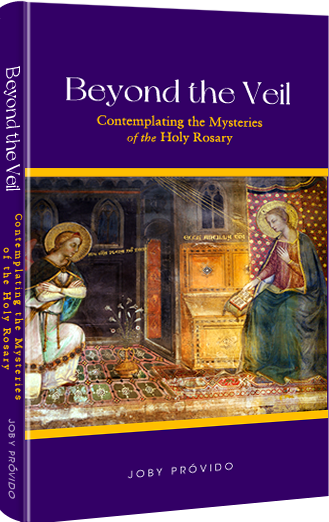
Beyond the Veil
Contemplating the Mysteries of the Holy Rosary
Prayer giants like Pope St. John Paul II, Pope Paul VI, Bl. Archbishop Fulton Sheen, and Bishop Robert Baron advocate that we contemplate on the mysteries of the rosary while we say the vocal prayers. Unfortunately, there are not many books that teach us how to do this. Beyond the Veil comes to the rescue by suggesting seven ways we can pray the rosary the way it was intended.
The larger part of the book offers mental images for each of the mysteries we can use in our contemplation, for how can we imagine the scenes in the rosary if we don't know about them?
Get your copy now either in Hardbound, Paperback, or Kindle
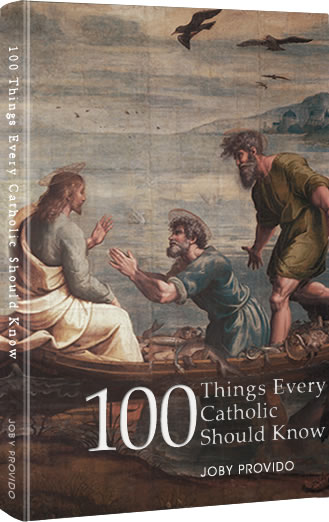
100 Things Every Catholic Should Know
Whether or not you are new to the Catholic Church, or struggling, or lapsed, or dynamically involved, this book will enlighten you with the essentials of the Faith that have been handed down to us by the apostles.
Each of the 100 topics is easy to read and distilled into bite-sized portions. Through cross-referencing, the book also shows how the topics are interrelated. Those who are new to the Faith will find this book an edifying handy reference, and those who have simply forgotten will find it a great review material that might spark a new love for God and religion.
Get your copy now either in Hardbound, Paperback, or Kindle

Typology for Beginners
A Catholic Perspective on understanding the New Testament through the Old Testament
First-century Jews converted to Christianity in droves because of the way the New Testament was written to show Jesus was the Messiah promised by the Old Testament. We also learn about how Mary is the New Eve and the Ark of the Covenant in the way the writers portray her.
Through typology, the patterns that connect the Old and New Testaments make the Bible stories more accessible so that one becomes excited to read Sacred Scripture again.
Get your copy now either in Hardbound, Paperback, or Kindle
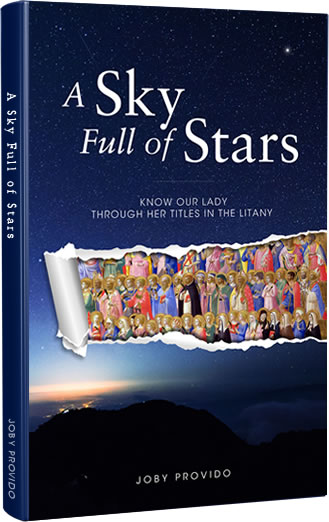
A Sky Full of Stars
Know Our Lady through her Titles in the Litany
The Church helps us understand who Mary is by honoring her with different titles in the Litany of the Blessed Virgin Mary. Unfortunately, over time and difference of culture, we might not grasp what it is the Church is ascribing to her and lose that opportinity to get to know her.
In A Sky Full of Stars, each title of the Litany is explained so we get know Mary more and fall in love with her all over again.
Get your copy now either in Hardbound, Paperback, or Kindle


